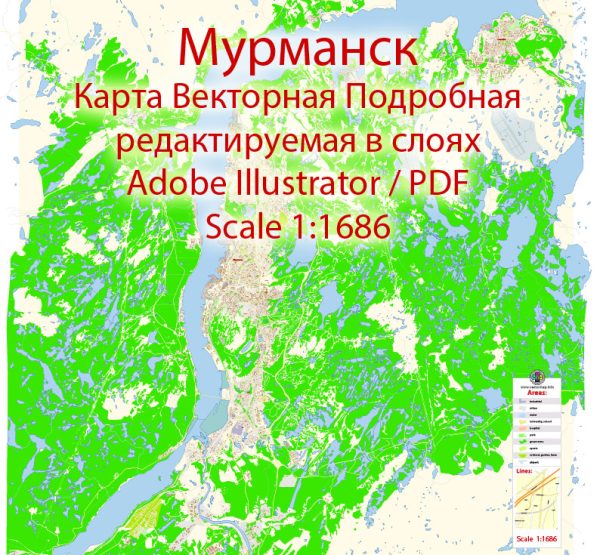Murmansk, located in the far northwest of Russia, is the largest city in the world above the Arctic Circle. Its history of urban development is closely tied to its strategic location and the development of the Russian Arctic.
- Early Years and Foundation:
- Murmansk was officially founded on October 4, 1916, during World War I. The city’s establishment was primarily driven by the need for a northern seaport that would remain ice-free year-round, providing a vital link for the transportation of war supplies.
- Importance during World War I:
- The construction of the Murmansk Railway, connecting Murmansk to Petrograd (now St. Petersburg), was a significant part of the city’s development during this period. The railway facilitated the transportation of goods and military supplies.
- Russian Civil War:
- Murmansk played a crucial role during the Russian Civil War (1918-1922) as a key port for the Allies, who were supporting the White Army against the Bolsheviks. The city was occupied by British, French, and American forces during this time.
- Soviet Era:
- After the Civil War, Murmansk became an important Soviet naval base and continued to serve as a major port for Arctic shipping. The city’s strategic importance was underscored during World War II when it played a critical role in the transportation of Allied supplies to the Soviet Union via the Arctic Convoys.
- Post-War Period:
- The post-war period saw further development of Murmansk as an industrial and administrative center. The city’s population grew, and various industries, including fishing, mining, and shipbuilding, contributed to its economic development.
- Nuclear-Powered Icebreakers:
- Murmansk became a hub for the Soviet Union’s nuclear-powered icebreaker fleet. These icebreakers played a key role in maintaining shipping routes through the Arctic, supporting economic and military activities in the region.
- Contemporary Period:
- In recent decades, Murmansk has faced economic challenges, especially after the dissolution of the Soviet Union. However, it remains a significant port city, and its Arctic location has gained geopolitical importance due to the increasing interest in the Arctic region’s natural resources and shipping routes.
- Arctic Development:
- The city has been part of Russia’s broader strategy for Arctic development, with increased focus on the Northern Sea Route as Arctic ice recedes. Murmansk is positioned to play a role in facilitating shipping and resource extraction in the Arctic.
Murmansk’s history reflects its strategic and geopolitical significance, evolving from a wartime necessity to a key player in Arctic development and international relations.


 Author: Kirill Shrayber, Ph.D.
Author: Kirill Shrayber, Ph.D.